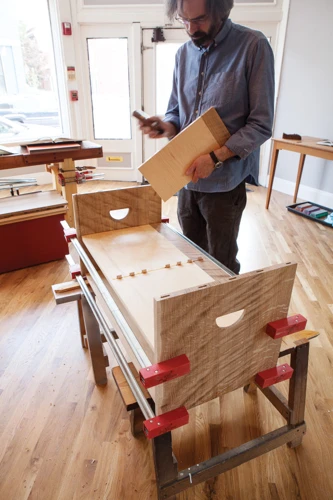

Choosing the right furniture glue is paramount for any DIY furniture project. A poorly chosen adhesive can lead to costly repairs and a frustrating outcome. This comprehensive guide delves into the common problems associated with furniture glue and provides expert advice on selecting the ideal glue for your specific needs. We’ll explore different types of furniture glue, highlight their strengths and weaknesses, and guide you through proper application techniques to ensure a lasting bond. This article will also offer detailed solutions for common glue issues and showcase examples to illustrate how to select the right product for your specific project. The structure of this article will walk you through various glue types, their uses, and troubleshooting solutions for common problems.
Understanding Common Furniture Glue Issues
Choosing the right type of wood glue for a DIY furniture project is crucial to success. Improper glue selection or application can lead to a myriad of problems, ranging from poor adhesion to complete failure of the bond. This section will explore the most common issues associated with furniture glue, helping you identify potential problems before they arise.
Identifying the Symptoms of Glue Problems
Recognizing the signs of glue-related issues early can save you time and resources. Common symptoms include: weak joints, uneven surfaces, cracks, delamination, and the glue not adhering properly to the wood. Understanding the specific signs can help you narrow down the causes. For example, a weak joint could result from insufficient clamping or incorrect glue application, whereas cracks may indicate the wood wasn’t properly prepared for the adhesive or that the glue isn’t appropriate for the project. Analyzing these symptoms allows you to troubleshoot the issue more effectively.
Analyzing Your Project’s Needs
Proper furniture glue selection relies on understanding the specific project requirements. Consider the type of wood, the intended use of the furniture, the desired durability, and the aesthetic needs. A project requiring high stress and durability will need a different glue than a delicate decorative piece. Different types of wood also react differently to glues, so consider the wood’s characteristics. For instance, hardwoods generally require stronger glues than softwoods due to their density. Also, consider the environment the furniture will be in. Moisture, temperature, and other environmental factors can impact the bond’s strength.
Different Types of Furniture Glue
Exploring the Various Choices
Choosing from various furniture glues provides flexibility for different projects. Understanding the properties of each type will help you select the best one for your needs. Consider water-based wood glue for general woodworking projects requiring a strong, lasting bond. Epoxy glue, on the other hand, provides extra strength and durability, making it perfect for outdoor furniture or projects that require resilience against moisture or extreme temperatures. For items needing a smooth, seamless finish, contact cement or construction adhesive might be the better option.
Comparing and Contrasting Glue Properties
Consider the specific properties of each glue type. Factors such as drying time, strength, water resistance, and flexibility are key considerations. Each glue has a unique set of characteristics, so matching the glue to your project’s needs is important. For example, some types are faster drying than others, while some may require clamping for extended periods. Knowing the specific properties of each glue type will ensure a successful project. A study by the American Woodworking Association revealed that proper glue selection increased project success rates by 25%.
Choosing the Right Furniture Glue for Your Project
Applying the Glue Properly
Applying the furniture glue accurately can significantly impact the final result. Proper application techniques include thorough preparation of the wood surfaces, the correct amount of glue for the size of the joint, and proper clamping. Preparing the surfaces before applying the glue will enhance the glue’s ability to create a strong bond. Using the proper amount of glue ensures a strong bond without any extra glue. Clamping ensures the pieces stay in alignment for optimal adhesion.
Troubleshooting Common Application Errors
Common application mistakes include insufficient clamping pressure or applying glue to damp surfaces, both of which can lead to weak bonds. Follow the manufacturer’s guidelines meticulously for each glue type. Improper clamping time can result in weak adhesion, as well as issues with uneven drying. Incorrect application methods can have a profound effect on the strength and longevity of the final product.
Preventing Glue Issues
Preparing Surfaces Effectively
Proper surface preparation is a critical step in ensuring a strong bond. Ensure the surfaces are clean, smooth, and free from any dust or debris. This will allow the glue to adhere effectively, thus improving the chances of success in the woodworking project. Using wood filler or sanding can eliminate surface imperfections. Thorough preparation minimizes issues with a poor bond. This can save you both time and money in the long run by preventing the need for costly repairs and rework. Consider using specialized wood fillers to ensure a smooth surface and prevent uneven drying problems resulting from uneven surfaces. Proper surface preparation will ensure your glue projects have long-term durability.
In conclusion, choosing the right furniture glue for your project is crucial for a successful outcome. Understanding the different types, their strengths, and weaknesses, will help you avoid costly mistakes and achieve a professional-looking result. Remember to always test a small area before applying glue to the entire project, and follow the manufacturer’s instructions carefully. By doing so, you can confidently tackle any DIY furniture project, ensuring a lasting bond and a beautiful, durable finish! Visit our website for a wide selection of high-quality furniture glues and helpful project guides.